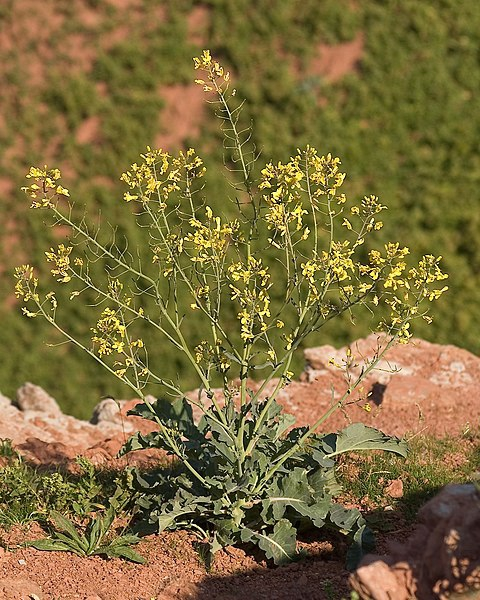What do cabbage, kale, broccoli, brussel sprouts, cauliflower, collard greens & kohlrabi have in common?
If you said "they're the same species of plant, selected for different qualities", you're correct!
Let's talk about the chameleon of the vegetable world, the #Brassica!
If you said "they're the same species of plant, selected for different qualities", you're correct!
Let's talk about the chameleon of the vegetable world, the #Brassica!

They're all Brassica oleracea, derived from the wild cabbage, which is itself part of the wild mustard FAMILY.
Brussel sprouts are cultivars selected for unopened lateral lead buds, broccoli & cauliflower for the unopened flowers, kale for leaves, kohlrabi for enlarged stem.
Brussel sprouts are cultivars selected for unopened lateral lead buds, broccoli & cauliflower for the unopened flowers, kale for leaves, kohlrabi for enlarged stem.

That's the basics, but there's an even larger family of Brassica whose genetic intercompatibility have produced endless combinations of cultivated crops!
Let's talk about the "triangle of U", named for 1935 paper by 'U Nagaharu' where he presented a theory of Brassica genetics.
Let's talk about the "triangle of U", named for 1935 paper by 'U Nagaharu' where he presented a theory of Brassica genetics.

The basics:
There are 3 diploid species
(AA) Brassica rapa:turnip, napa cabbage and bok choi
(BB) Brassica nigra:black mustard (popular in curries!)
(CC) Brassica oleracea: 'cabbages'
There are 3 diploid species
(AA) Brassica rapa:turnip, napa cabbage and bok choi
(BB) Brassica nigra:black mustard (popular in curries!)
(CC) Brassica oleracea: 'cabbages'

These three diploids (N=2) can be hybridized to produce the following allotetraploid (N=4) hybrids:
(AABB) Brown mustard
(AACC) Rapeseed (which we call "canola" in the US) & rutabaga
(BBCC) Ethiopian mustard
(AABB) Brown mustard
(AACC) Rapeseed (which we call "canola" in the US) & rutabaga
(BBCC) Ethiopian mustard

Canola is one of the most commercially significant vegetable oils, produced by cross-breeding a turnip and a cabbage!
It's even possible to cross all three to produce allohexaploids (N=6), although these hybrids haven't been commercialized.
It's even possible to cross all three to produce allohexaploids (N=6), although these hybrids haven't been commercialized.

So why is Brassica genetically flexible?
A theory: they're all related to an ancient hexaploid (N=6) plant that gave rise to the diploid lines we know today, so gene organization between these chromosomes are intercompatible.
Like old friends reunited after millions of years.
A theory: they're all related to an ancient hexaploid (N=6) plant that gave rise to the diploid lines we know today, so gene organization between these chromosomes are intercompatible.
Like old friends reunited after millions of years.

If we want to fully complete our dive into the Brassica family, I should mention they're also ornamentals like Erysimum (the wallflowers), they're the primary plant research model (Arabidopsis thaliana) & maybe most importantly, the firey spices horseradish, wasabi & mustard. 



• • •
Missing some Tweet in this thread? You can try to
force a refresh

 Read on Twitter
Read on Twitter



















